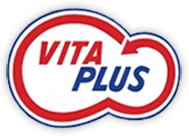
Mastitis in dairy cattle: Prevention is key

Mastitis is a common issue in dairy cows, negatively impacting both milk yield and quality. According to the National Mastitis Council, the economic loss due to mastitis in the United States is estimated to exceed $200 per animal annually in direct expenses.
Mastitis is generally classified into two main categories: contagious and environmental. Both types present similar symptoms, making it difficult to distinguish between them without further testing. Detection methods include the California Mastitis Test (CMT) and visual inspection of the milk and udder. Clinical mastitis typically presents signs such as a warm, swollen, or red quarter on the udder, and abnormal milk, including watery consistency, flakes, or clots.
The best way to reduce the risk of developing mastitis is through a proactive prevention approach focused on risk factors. This includes two areas of focus: management and nutrition.
Management
Cow handling and environmental management play significant roles in the incidence of mastitis. The following management practices can elevate a cow’s immune response:
- Bedding: Maintain clean, dry bedding. Moist or dirty bedding harbors increased levels of bacteria, which can be transferred into the cow’s udder while lying down. Common bedding materials in the dairy industry include sand, sawdust, straw and recycled manure solids. Each material requires specific management practices to ensure proper hygiene to decrease somatic cell count and mastitis incidence.
- Parlor protocols: Following proper milking parlor protocols is essential in reducing mastitis risk. Key practices include predipping and cleaning the teats thoroughly with a clean, dry towel and forestripping each teat before milking. Post-milking, it’s important to apply an adequate amount of disinfectant (post-dip) to cover each teat. Additionally, maintaining the cleanliness and sanitation of milk equipment is crucial, along with maintenance updates of equipment and regular checking of system settings or calibrations. It is important to frequently observe robot equipment or automated teat dip applicators to ensure proper function. Make sure they are kept clean and are applying a full-coverage disinfectant dip.
- Reducing stress: Stress can trigger inflammatory responses in dairy cows, compromising their immune function and increasing susceptibility to mastitis. Common stressors include:
- Environmental stressors: Heat or cold stress and long-distance transportation
- Behavioral stressors: Overcrowding a pen, poor social interactions within the herd, frequent pen movements and negative human interactions
- Nutritional stressors: Feed deprivation or consumption of poor-quality feeds, such as contaminated or spoiled feedstuff
Nutrition
Nutrition significantly influences the immune system in mammals. In dairy cows, deficiencies in specific vitamin and trace minerals have been shown to weaken immune defenses and ultimately increases the risk of mastitis. Essential vitamins and trace minerals include selenium, copper, zinc, niacin, vitamin E and vitamin A.
Research has indicated that cows that developed mastitis during lactation often had lower vitamin levels during the previous dry period. Therefore, ensuring cows have adequate amounts of vitamins and minerals during stressful and immunocompromised times (such as the dry period and early lactation) can decrease the risk of mastitis development. Early lactation cows that present with clinical mastitis are three times more likely to be culled from the herd, creating an impactful financial loss on a dairy farm. In addition, rumen upset, particularly consistent low rumen pH conditions caused by high starch and low physically effective fiber content, has been linked to increased systemic inflammation. This systemic inflammation increases the risk of infection and mastitis.
For mastitis treatments and additional prevention strategies, please consult your veterinarian. Reach out to your Vita Plus consultant if you have additional questions about trace minerals, vitamin supplementation or would like to discuss herd management practices to reduce mastitis incidence in your herd.
| Category: |
Dairy Performance |

